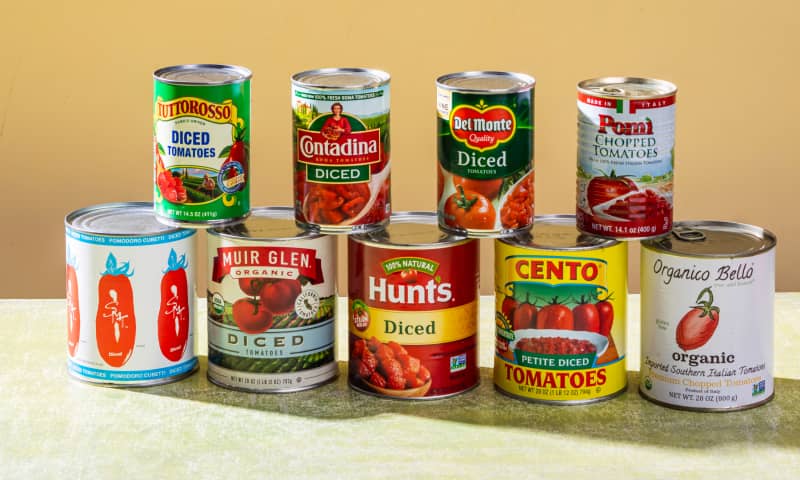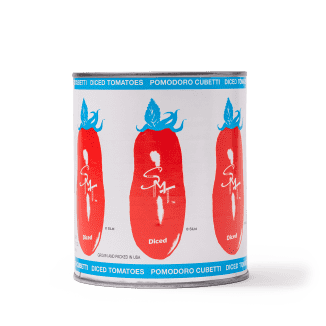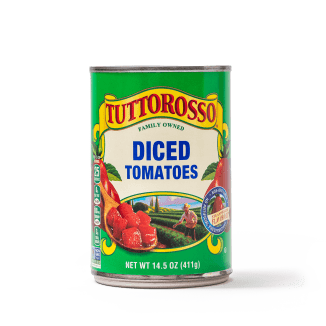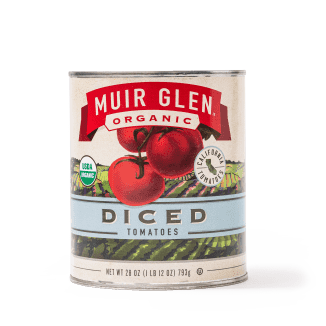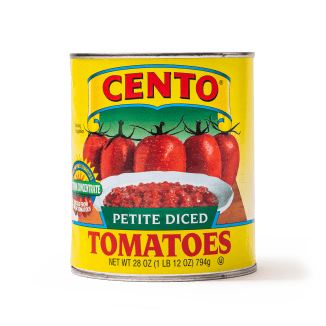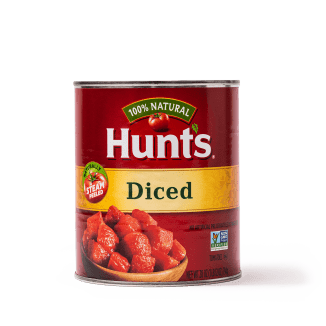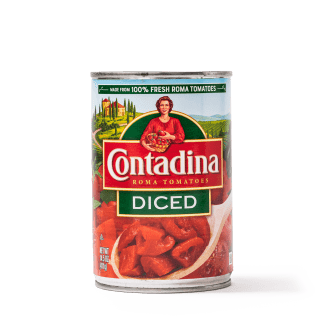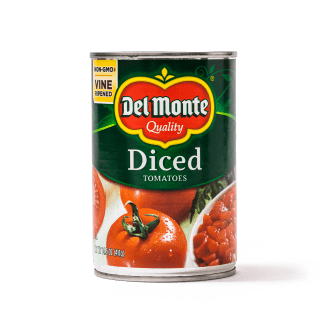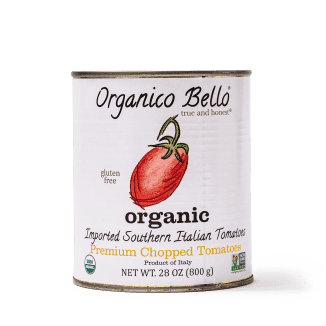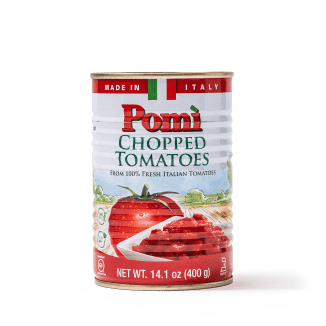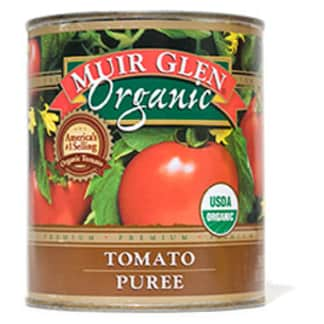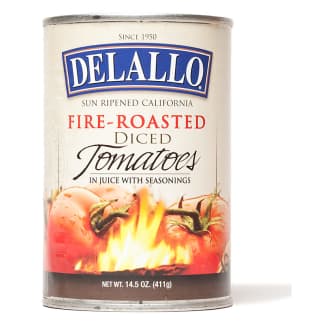Canned diced tomatoes are a pantry staple. With large, firm pieces of tomato typically not found in cans of crushed tomatoes, diced tomatoes add both texture and sweet, bright tomato flavor to pasta sauces, soups, and stews. We often use them straight from the can—there’s no need to pulse them in the food processor or crush them by hand as we do with canned whole tomatoes. Supermarket shelves are overflowing with options, so how do you know which one is best?
To find out, we purchased and tasted nine canned diced tomatoes products, including several from top-selling brands as identified by IRI, a Chicago-based market research firm. For such a simple product, there's a surprising amount of variability, including their origins, names, and packaging. Seven products contained tomatoes that were grown and processed in the United States; the other two were made in Italy from tomatoes grown there. Most of the products in our lineup were labeled “canned diced tomatoes,” but one was labeled “petite-diced” and the two from Italy were “chopped.” Our lineup included products in cans containing about 14 ounces to cans holding twice that amount. We first sampled each product plain (unheated) and then we used each to make a simple tomato sauce with olive oil, garlic, and salt.

Growing and Harvesting Tomatoes
There are thousands of tomato varieties grown worldwide, each with their own flavor and textural profiles, though commercially grown tomatoes destined for canning are typically thick-walled paste varieties (the most well-known being Roma). In the United States, commercial tomato farming occurs in about 20 states, and it’s common for companies to source tomatoes from more than one state. More than 500 farms in northern Italy provide tomatoes for one brand in our lineup. The other Italian brand uses tomatoes grown on farms in southern Italy. Once the tomatoes are harvested, they are cleaned, sorted, and peeled. Then they’re cut to the manufacturer's specifications, divided into cans, and covered with juice before being sealed and heated.
We Like Bright, Fresh-Tasting Tomatoes
Good canned tomatoes offer bright, fresh flavor. We ran every product through a fine mesh strainer. When we compared the strained liquids of all the tomatoes in our lineup, six were pale and golden in color and three yielded dark-red liquid. Tasters described the tomatoes with golden juices as “fresh,” “sweet,” and “bright.” Two products with dark-red liquid tasted more “cooked” than the others, and tasters gave them lower marks for flavor. The third product with dark-red liquid tasted fresh and bright. That said, there are many factors that go into producing canned tomatoes including where and how the tomatoes are grown and whether or not the tomato juice added to each can is cooked (and if it is cooked, how hot the juice is when added).

Medium-Size Tomato Pieces and Plenty of Salt
American manufacturers typically dice their tomatoes using a commercial crosscut dicer, and sizes and shapes varied across products. The tomatoes labeled “petite diced” were the smallest in our lineup (about 0.5 centimeters). The tomato pieces of others ranged in size from medium (roughly 1.5 to 2 centimeters) to large ( up to about 3 centimeters). Tasters preferred brands with small or medium tomato pieces and docked brands with large pieces, finding them “obtrusive.” One of the Italian manufacturers uses a roller that crushes the tomatoes. The other uses a machine with blades that chops the tomatoes. The Italian tomato pieces did indeed look a bit more crushed and irregularly chopped, respectively, though they were larger than those in the products we sampled in our tasting of crushed tomatoes. Some tasters liked the texture of these two Italian products, while others expected canned diced tomatoes to have pieces with a more defined and distinct structure.

American companies add salt (to improve flavor and suppress bitterness), citric acid (to ensure safety and quality as well as enhance tartness), and calcium chloride (to maintain firmness) to their products, while the Italian brands we tasted contained none of these additions. The textures and flavors of the American tomatoes varied a bit, which is likely due to inherent differences in the tomatoes or the exact amounts of extra ingredients added. Nevertheless, we liked them all. Conversely, the Italian tomatoes were less seasoned, slightly bitter, and a little “soft.” Our tasters, comprised of mostly Americans, preferred the firmer, sweeter, and saltier canned diced tomatoes. Geographical preferences like this exist across all sorts of foods. Our top brands are American, but both styles have their strengths. We've presented the differences here so that you can think about what you like and want to eat.

Our Winner: San Merican Diced Tomatoes
Our top-rated canned diced tomatoes, San Merican Diced Tomatoes, are manufactured in the United States using tomatoes grown in New Jersey, Pennsylvania, and Ohio. Tasted plain, they were “sweet and fresh.” While these tomatoes had the most sodium in our lineup, 270 milligrams per serving, they tasted flavorful and fresh. The pieces “were the perfect size and had a nice bite to them.” When cooked into a simple sauce, these tomatoes “retained their firmness.”
- Taste plain
- Taste in tomato sauce with olive oil, garlic, and salt
- Strain and compare size and shape of tomato pieces and viscosity of liquid
- Strain the juice through a coffee filter and compare liquid to infer processing temperatures
- Tomato juice has moderate body
- Strained liquid is golden in color, indicating cooler-temperature processing that retains bright, fresh-tasting tomato flavor
- Consistent size and shape with small to medium (0.5–2.5 centimeter) pieces of tomato
- Contains calcium chloride to maintain firm tomatoes
- Contains at least 170 milligrams of sodium per ½-cup serving
